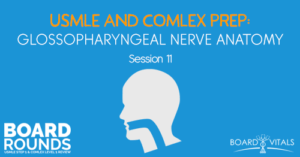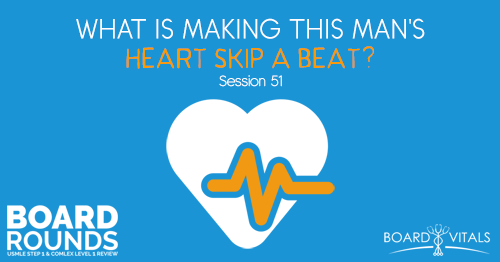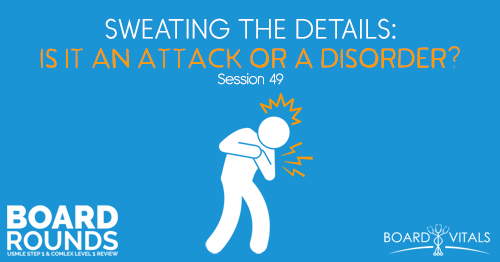Apple Podcasts | Google Podcasts

Session 11
Today, we discuss a more straightforward, neuro-anatomy question about the glossopharyngeal nerve.
As always, we’re joined by Dr. Andrea Paul of Board Vitals. If you’re in the market for QBanks and practice tests for the USMLE/COMLEX, check out Board Vitals. Use the promo code BOARDROUNDS to save 15% on your purchase.
[02:00] Question
Which of the glands of the options below are innervated by the efferent autonomic fibers of the glossopharyngeal nerve?
[02:14] Answer Choices
You have to know what the glossopharyngeal nerve and what type of fibers are innervating the glands.
Answer choices:
(A) Nasal
(B) Submandibular
(C) Sublingual
(D) Parotid
(E) Lacrimal
[02:45] Thought Process in Answering the Question
Glosso refers to the tongue and pharyngeal refers to the pharynx area. So this is somewhere around the mouth. The interesting with glossopharyngeal is that it has a range of effects. Some of the places it touches would surprise you. But first, you can eliminate nasal. But the rest of the choices could be fair game.
This specific nerve has a lot of sensory – parasympathetic and motor functions. It’s tough to answer so this can be challenging to people. This nerve starts at the medulla and coming out of the jugular foramen. It’s traveling through both anteriorly and posteriorly. So it has a branch that goes to the inner ear.
Lacrimal refers to the tear ducts so you can get rid of this one too. Now, we’re down with three choices.
[06:55] Choosing Among the Three
First, remember the motor functions. So it’s innervating the muscle in the pharynx and then you think through the sensory functions. Glossopharyngeal is sensory to the posterior third of the tongue or the back half of the tongue. If you can remember that section of the tongue, it leads you closer to the location of the gland that may be in that area. It’s also going up into the middle ear, the Eustachian tube for sensory function.
Anatomically, you start to think more up anterior than sublingual. Think of it as more of in the ear area. So the correct answer here is the Parotid gland, which is the only gland that doesn’t receive any autonomic innervations from the facial nerve. So it receives that from the glossopharyngeal nerve. This is the main differentiator. Hence, the exam likes to ask about it.
The posterior third of the tongue and the middle ear are things they love to ask about glossopharyngeal. Also, know which muscles are innervated, which is the stylopharyngeus in the pharynx. Also, try to remember the path and the branches. It sends a branch up to the middle ear. There are five other branches. One goes to the stylopharyngeus muscle, one is the pharyngeal branch, one is tonsilar, one is sublingual, and then one goes to the parotid body and sinus. You can draw this to help give you a visualization.
Afferent refers to the sensory nerves coming back towards the central nervous system and efferent refers to “going away” for motor function. In terms of understanding parasympathetic vs sympathetic, just remember that most glandular effects are parasympathetic just like most of your organs.
[12:24] Board Vitals
Check out the QBank and practice tests over at Board Vitals to help you be prepared for your exam. They have over 1,750 questions for USMLE and over 1,500 questions for COMLEX. Get a 1-month, 3-month, or 6-month plan. They all come with a free trial. No credit card required. Use the promo code BOARDROUNDS to save 15% on your purchase.
Links:
Board Vitals (promo code BOARDROUNDS)
SEARCH SITE
LISTEN FOR FREE











